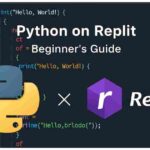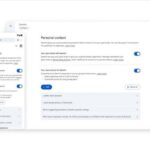Introduction: Why Sarah’s Coding Journey Changed Everything
Sarah was a marketing manager who always felt intimidated by programming. Every time she tried to learn Python, she got stuck installing complicated software, dealing with version conflicts, and managing virtual environments. Sound familiar?
Then she discovered Replit, and everything changed. Within 30 minutes, she was writing her first Python program without needing to install anything on her computer. Six months later, she automated her entire marketing workflow using Python scripts she built on Replit.
This is the power of replit python – it removes all the technical barriers that stop beginners from actually learning to code. In this comprehensive guide, I’ll walk you through everything you need to know about getting started with Python programming on Replit, from your very first “Hello World” to building real projects that solve actual problems.
What is Replit and Why It’s Perfect for Python Beginners
Replit is a cloud-based integrated development environment (IDE) that runs entirely in your web browser. Think of it as Microsoft Word, but for writing code instead of documents. The beauty of replit com python is that you can start coding immediately without any setup hassles.
The Traditional Python Setup Nightmare
Before cloud IDEs like Replit existed, learning Python meant:
- Downloading and installing Python from python.org
- Figuring out PATH variables and environment settings
- Installing code editors or IDEs separately
- Managing package installations and dependencies
- Dealing with different Python versions
- Troubleshooting platform-specific issues
For beginners, these technical hurdles often killed motivation before they even wrote their first line of code.
The Replit Revolution
Replit coding eliminates all these problems by providing:
- Instant Access: Open your browser, visit replit.com, and start coding
- No Installation Required: Everything runs in the cloud
- Built-in Package Management: Install libraries with one click
- Collaborative Features: Share and work on projects with others
- Multiple Language Support: Python, JavaScript, C++, and 50+ other languages
- Free Tier: Start learning without spending money
Getting Started: Your First Steps on Replit
Let me walk you through creating your account and writing your first Python program, just like I did with my 12-year-old nephew last weekend.
Step 1: Creating Your Replit Account
- Visit www replit com python (or just replit.com)
- Click “Sign up” in the top right corner
- Choose to sign up with Google, GitHub, or email
- Verify your email if you chose the email option
- Complete your profile (this helps with the community features)
Pro Tip: If you’re a student, sign up with your school email to potentially access Replit’s education features.
Step 2: Creating Your First Python Repl
Once logged in, here’s how to start your python replit journey:
- Click the “+ Create Repl” button
- Select “Python” from the template list
- Give your repl a name (something like “my-first-python-program”)
- Click “Create Repl”
Congratulations! You now have a fully functional Python development environment running in your browser.
Step 3: Understanding the Replit Interface
The replit python online interface consists of several key areas:
Left Sidebar (Files)
- Shows all your project files
- Click the folder icon to see your file structure
- The main.py file is where your Python code goes
Center Panel (Code Editor)
- This is where you write your Python code
- Features syntax highlighting, auto-completion, and error detection
- Works just like any professional code editor
Right Panel (Console/Output)
- Shows the output of your programs
- Displays error messages if something goes wrong
- Interactive shell for testing quick Python commands
Top Toolbar
- Green “Run” button to execute your code
- Share button to collaborate with others
- Settings and configuration options
Your First Python Program: More Than Just “Hello World”
Let’s start with something more interesting than the typical “Hello World” program. We’ll create a simple program that demonstrates the power of Python while being beginner-friendly.
Project 1: Personal Introduction Generator
Replace the default code in main.py with this:
python
# Personal Introduction Generator
print("=== Personal Introduction Generator ===")
print()
# Get user information
name = input("What's your name? ")
age = input("How old are you? ")
hobby = input("What's your favorite hobby? ")
dream = input("What's your biggest dream? ")
print("\n" + "="*50)
print("HERE'S YOUR INTRODUCTION:")
print("="*50)
print()
print(f"Hi! My name is {name} and I'm {age} years old.")
print(f"I love {hobby} and spend a lot of my free time doing it.")
print(f"My biggest dream is to {dream}.")
print(f"Nice to meet you!")
print()
print("="*50)Click the green “Run” button and interact with your program. This simple script demonstrates several fundamental Python concepts:
- Variables (name, age, hobby, dream)
- Input/Output (input() and print() functions)
- String formatting (f-strings)
- Basic string operations (multiplication for creating lines)
Understanding What Just Happened
When you ran this program on python online replit, several things occurred:
- Interpretation: Replit’s Python 3 interpreter read your code line by line
- Execution: Each instruction was carried out in order
- Interaction: The program waited for your input and responded accordingly
- Output: Results were displayed in the console
This is fundamentally different from languages like C++ or Java, where you need to compile code before running it. Python’s interpreted nature makes it perfect for beginners.
Also Read: Replit Agent Secrets: Unlock Faster App Development Like a Pro in 2025
Python Fundamentals: Building Your Foundation
Now that you’ve tasted success, let’s build a solid foundation in Python programming concepts using replit python 3.
Variables and Data Types
Python handles different types of data, and understanding these is crucial:
python
# Numbers
age = 25
height = 5.8
temperature = -10
# Strings (text)
name = "Alex"
message = 'Hello World'
long_text = """This is a
multi-line string"""
# Booleans (True/False)
is_student = True
has_license = False
# Lists (collections of items)
fruits = ["apple", "banana", "orange"]
numbers = [1, 2, 3, 4, 5]
mixed = [1, "hello", True, 3.14]
# Dictionaries (key-value pairs)
person = {
"name": "Sarah",
"age": 28,
"city": "New York"
}
# Print information about variables
print(f"Name: {name} (type: {type(name)})")
print(f"Age: {age} (type: {type(age)})")
print(f"Height: {height} (type: {type(height)})")
print(f"Is student: {is_student} (type: {type(is_student)})")Control Flow: Making Decisions
Programs become powerful when they can make decisions and repeat actions:
python
# If statements
score = int(input("Enter your test score (0-100): "))
if score >= 90:
grade = "A"
message = "Excellent work!"
elif score >= 80:
grade = "B"
message = "Good job!"
elif score >= 70:
grade = "C"
message = "Not bad, keep improving!"
elif score >= 60:
grade = "D"
message = "You need to study more."
else:
grade = "F"
message = "Please see me after class."
print(f"Your grade is {grade}. {message}")
# Loops - repeating actions
print("\nCountdown:")
for i in range(5, 0, -1):
print(f"{i}...")
print("Blast off! 🚀")
# While loops
attempts = 0
max_attempts = 3
while attempts < max_attempts:
password = input("Enter password: ")
if password == "python123":
print("Access granted!")
break
else:
attempts += 1
print(f"Wrong password. {max_attempts - attempts} attempts remaining.")
if attempts == max_attempts:
print("Account locked. Too many failed attempts.")Functions: Organizing Your Code
Functions are like mini-programs within your program:
python
def greet_user(name, time_of_day="day"):
"""Greet a user based on the time of day"""
greetings = {
"morning": "Good morning",
"afternoon": "Good afternoon",
"evening": "Good evening",
"day": "Hello"
}
greeting = greetings.get(time_of_day, "Hello")
return f"{greeting}, {name}! Welcome to Python programming."
def calculate_bmi(weight, height):
"""Calculate Body Mass Index"""
bmi = weight / (height ** 2)
if bmi < 18.5:
category = "Underweight"
elif bmi < 25:
category = "Normal weight"
elif bmi < 30:
category = "Overweight"
else:
category = "Obese"
return round(bmi, 2), category
# Using functions
user_name = input("What's your name? ")
print(greet_user(user_name, "morning"))
weight = float(input("Enter your weight in kg: "))
height = float(input("Enter your height in meters: "))
bmi, category = calculate_bmi(weight, height)
print(f"Your BMI is {bmi} ({category})")Intermediate Projects: Building Real Applications
Now let’s create more substantial projects that demonstrate replit python course level skills.
Project 2: Personal Finance Tracker
python
import datetime
class FinanceTracker:
def __init__(self):
self.transactions = []
self.categories = ["Food", "Transportation", "Entertainment",
"Shopping", "Bills", "Income", "Other"]
def add_transaction(self, amount, category, description):
transaction = {
'date': datetime.datetime.now().strftime("%Y-%m-%d %H:%M"),
'amount': amount,
'category': category,
'description': description
}
self.transactions.append(transaction)
print(f"✅ Added: ${amount} for {description}")
def show_balance(self):
total = sum(t['amount'] for t in self.transactions)
income = sum(t['amount'] for t in self.transactions if t['amount'] > 0)
expenses = sum(abs(t['amount']) for t in self.transactions if t['amount'] < 0)
print(f"\n💰 FINANCIAL SUMMARY")
print(f"Total Balance: ${total:.2f}")
print(f"Total Income: ${income:.2f}")
print(f"Total Expenses: ${expenses:.2f}")
def show_transactions(self):
if not self.transactions:
print("No transactions yet.")
return
print(f"\n📊 RECENT TRANSACTIONS")
print("-" * 60)
for transaction in self.transactions[-10:]: # Show last 10
amount_str = f"+${transaction['amount']}" if transaction['amount'] > 0 else f"-${abs(transaction['amount'])}"
print(f"{transaction['date']} | {amount_str:>8} | {transaction['category']:>12} | {transaction['description']}")
# Main program
def main():
tracker = FinanceTracker()
print("🏦 Welcome to Your Personal Finance Tracker!")
print("Track your income and expenses easily.\n")
while True:
print("\nOptions:")
print("1. Add Income")
print("2. Add Expense")
print("3. View Balance")
print("4. View Transactions")
print("5. Exit")
choice = input("\nChoose an option (1-5): ")
if choice == "1":
amount = float(input("Enter income amount: $"))
description = input("Description: ")
tracker.add_transaction(amount, "Income", description)
elif choice == "2":
amount = float(input("Enter expense amount: $"))
print("Categories:", ", ".join(tracker.categories))
category = input("Category: ")
description = input("Description: ")
tracker.add_transaction(-amount, category, description)
elif choice == "3":
tracker.show_balance()
elif choice == "4":
tracker.show_transactions()
elif choice == "5":
print("Thanks for using Finance Tracker! 👋")
break
else:
print("Invalid choice. Please try again.")
if __name__ == "__main__":
main()This project introduces object-oriented programming, date handling, and more complex data structures.
Project 3: Web Scraper (Using Replit’s Built-in Libraries)
python
import requests
import json
from datetime import datetime
def get_weather_info(city):
"""Get weather information for a city"""
# Using a free weather API (you'd need to sign up for an API key)
# This is a simplified example
print(f"🌤️ Getting weather for {city}...")
# Simulated weather data for demonstration
weather_data = {
"city": city,
"temperature": "22°C",
"condition": "Partly Cloudy",
"humidity": "65%",
"wind": "10 km/h"
}
return weather_data
def display_weather(weather):
"""Display weather information nicely"""
print(f"\n🌍 Weather in {weather['city']}")
print("-" * 30)
print(f"🌡️ Temperature: {weather['temperature']}")
print(f"☁️ Condition: {weather['condition']}")
print(f"💧 Humidity: {weather['humidity']}")
print(f"💨 Wind: {weather['wind']}")
def main():
print("🌦️ Simple Weather App")
print("Get current weather for any city!")
while True:
city = input("\nEnter city name (or 'quit' to exit): ")
if city.lower() == 'quit':
print("Goodbye! 👋")
break
try:
weather = get_weather_info(city)
display_weather(weather)
except Exception as e:
print(f"❌ Error getting weather data: {e}")
if __name__ == "__main__":
main()Working with External Libraries on Replit
One of replit python‘s greatest strengths is its package management system. You can install and use thousands of Python libraries without any command-line wizardry.
Installing Packages
In your Replit project:
- Click on the “Packages” icon in the left sidebar (looks like a cube)
- Search for the package you want (e.g., “requests”, “matplotlib”, “pandas”)
- Click “+” to install it
- The package is automatically available in your code
Popular Beginner-Friendly Libraries
For Data Analysis:
python
import pandas as pd
import matplotlib.pyplot as plt
# Create and analyze data
data = {
'Month': ['Jan', 'Feb', 'Mar', 'Apr', 'May'],
'Sales': [1200, 1400, 1100, 1600, 1800]
}
df = pd.DataFrame(data)
print(df)
# Create a simple chart
plt.plot(df['Month'], df['Sales'])
plt.title('Monthly Sales')
plt.show()For Web Development:
python
from flask import Flask, render_template
app = Flask(__name__)
@app.route('/')
def home():
return "<h1>Hello from my Replit Python web app!</h1>"
@app.route('/about')
def about():
return "<h2>This is my first web app built on Replit!</h2>"
if __name__ == '__main__':
app.run(host='0.0.0.0', port=8080)Replit Hosting: Sharing Your Python Projects
Replit website hosting makes it incredibly easy to share your Python applications with the world.
Types of Hosting on Replit
Always-On Projects
- Keep your application running 24/7
- Great for web apps, bots, and APIs
- Paid feature but worth it for serious projects
Standard Repls
- Run when someone visits the link
- Perfect for sharing code examples and demos
- Free tier includes this functionality
Deploying Your First Web App
Here’s a simple web app you can build and host:
python
from flask import Flask, render_template_string
app = Flask(__name__)
HTML_TEMPLATE = """
<!DOCTYPE html>
<html>
<head>
<title>My First Python Web App</title>
<style>
body { font-family: Arial, sans-serif; margin: 40px; }
.container { max-width: 600px; margin: 0 auto; }
h1 { color: #333; }
.feature { background: #f0f8ff; padding: 20px; margin: 10px 0; border-radius: 8px; }
</style>
</head>
<body>
<div class="container">
<h1>🐍 Welcome to My Python Web App!</h1>
<p>Built with Python and Flask, hosted on Replit!</p>
<div class="feature">
<h3>🚀 Lightning Fast Development</h3>
<p>Built and deployed in minutes, not hours!</p>
</div>
<div class="feature">
<h3>🌐 Instantly Shareable</h3>
<p>Share your creations with a simple link!</p>
</div>
<div class="feature">
<h3>🔧 No Setup Required</h3>
<p>Just code, run, and deploy!</p>
</div>
</div>
</body>
</html>
"""
@app.route('/')
def home():
return render_template_string(HTML_TEMPLATE)
if __name__ == '__main__':
app.run(host='0.0.0.0', port=8080)After running this code, Replit will provide you with a URL to share your web application with anyone!
Advanced Integration: MongoDB and Databases
For more complex applications, you might want to store data permanently. MongoDB replit integration allows you to add database functionality to your Python projects.
Setting Up MongoDB
- Go to the “Secrets” tab in your Replit project
- Add your MongoDB connection string as a secret
- Use the
pymongolibrary to connect
python
import os
from pymongo import MongoClient
# Connect to MongoDB (using environment variables for security)
client = MongoClient(os.environ['MONGODB_URI'])
db = client['my_app_database']
collection = db['users']
def add_user(name, email, age):
user = {
'name': name,
'email': email,
'age': age,
'created_at': datetime.datetime.now()
}
result = collection.insert_one(user)
return result.inserted_id
def get_all_users():
return list(collection.find({}))
# Example usage
user_id = add_user("John Doe", "john@example.com", 25)
print(f"Added user with ID: {user_id}")
users = get_all_users()
for user in users:
print(f"User: {user['name']} ({user['email']})")Monitoring Your Applications with UptimeRobot
When you start hosting applications, monitoring becomes important. Uptimerobot replit integration helps you track your app’s availability.
Setting Up Monitoring
- Create a free UptimeRobot account
- Add your Replit app URL as a monitor
- Get notifications when your app goes down
- Track uptime statistics
This is especially useful for replit host website scenarios where reliability matters.
Best Practices for Python Development on Replit
Code Organization
Use Clear File Structure:
my-project/
├── main.py # Main application file
├── utils.py # Helper functions
├── config.py # Configuration settings
├── requirements.txt # Required packages
└── README.md # Project documentationWrite Clean, Readable Code:
python
# Good: Clear variable names and comments
def calculate_monthly_payment(loan_amount, annual_rate, years):
"""
Calculate monthly loan payment using the standard formula.
Args:
loan_amount (float): Principal loan amount
annual_rate (float): Annual interest rate (as decimal)
years (int): Loan term in years
Returns:
float: Monthly payment amount
"""
monthly_rate = annual_rate / 12
num_payments = years * 12
if monthly_rate == 0:
return loan_amount / num_payments
monthly_payment = loan_amount * (monthly_rate * (1 + monthly_rate) ** num_payments) / ((1 + monthly_rate) ** num_payments - 1)
return round(monthly_payment, 2)
# Usage example
payment = calculate_monthly_payment(250000, 0.035, 30)
print(f"Monthly payment: ${payment}")Security Best Practices
Use Environment Variables for Sensitive Data:
python
import os
# Never hardcode API keys or passwords
API_KEY = os.environ.get('API_KEY')
DATABASE_URL = os.environ.get('DATABASE_URL')
if not API_KEY:
raise ValueError("API_KEY environment variable not set")Validate User Input:
python
def get_valid_age():
while True:
try:
age = int(input("Enter your age: "))
if 0 <= age <= 150:
return age
else:
print("Please enter a realistic age (0-150)")
except ValueError:
print("Please enter a valid number")
age = get_valid_age()
print(f"Your age: {age}")Exploring Alternatives: Sites Like Replit
While this guide focuses on Replit, it’s worth knowing about sites like replit that offer similar functionality:
CodePen
- Excellent for front-end web development
- Great community and showcase features
- Limited Python support
Glitch
- Strong focus on web applications
- Good collaboration features
- Node.js focused but supports Python
CodeSandbox
- Professional-grade development environment
- Excellent for React and modern web development
- Growing Python support
Gitpod
- Full Linux development environment
- Integrates with GitHub repositories
- More complex but very powerful
Why Replit Stands Out
Replit website templates and the platform’s educational focus make it particularly beginner-friendly:
- Instant Collaboration: Share projects with one click
- Built-in Database: Simple key-value storage included
- Package Management: One-click library installation
- Community: Active forums and shared projects
- Education Focus: Designed with learning in mind
- Multiple Languages: Switch between Python, JavaScript, C++, etc.
Building Your Python Portfolio on Replit
As you progress in your replit python course journey, building a portfolio becomes crucial for career development.
Portfolio Project Ideas
1. Personal Budget Manager
- Track income and expenses
- Generate spending reports
- Set budget goals and alerts
- Export data to CSV
2. Weather Dashboard
- Multi-city weather comparison
- Historical weather data
- Weather alerts and notifications
- Interactive charts and graphs
3. Task Management System
- Create, update, and delete tasks
- Priority levels and due dates
- Progress tracking
- Team collaboration features
4. Simple E-commerce Site
- Product catalog with search
- Shopping cart functionality
- User accounts and authentication
- Order processing simulation
Making Your Projects Stand Out
Add Professional Features:
python
import logging
from datetime import datetime
# Set up logging
logging.basicConfig(
level=logging.INFO,
format='%(asctime)s - %(levelname)s - %(message)s',
handlers=[
logging.FileHandler('app.log'),
logging.StreamHandler()
]
)
class ProfessionalApp:
def __init__(self):
self.version = "1.0.0"
self.start_time = datetime.now()
logging.info(f"Application started - Version {self.version}")
def process_data(self, data):
"""Process data with error handling and logging"""
try:
logging.info(f"Processing {len(data)} records")
# Your processing logic here
result = self.perform_calculations(data)
logging.info("Data processing completed successfully")
return result
except Exception as e:
logging.error(f"Error processing data: {e}")
return None
def perform_calculations(self, data):
# Simulated processing
return {"processed": len(data), "timestamp": datetime.now()}
# Usage
app = ProfessionalApp()
sample_data = [1, 2, 3, 4, 5]
result = app.process_data(sample_data)
print(f"Result: {result}")Troubleshooting Common Issues
Performance Problems
Slow Repl Loading:
- Check your internet connection
- Clear browser cache and cookies
- Try using a different browser
- Check Replit’s status page for outages
Code Running Slowly:
- Optimize loops and algorithms
- Use built-in functions when possible
- Avoid unnecessary file operations
- Consider using generators for large datasets
Code Errors
Import Errors:
python
# Wrong way
import non_existent_module # ModuleNotFoundError
# Right way - handle imports gracefully
try:
import optional_module
HAS_OPTIONAL_MODULE = True
except ImportError:
HAS_OPTIONAL_MODULE = False
print("Optional module not available - some features disabled")
if HAS_OPTIONAL_MODULE:
# Use the module
optional_module.do_something()
else:
# Provide alternative functionality
print("Using alternative method")Memory Issues:
python
# Memory-efficient way to read large files
def process_large_file(filename):
with open(filename, 'r') as file:
for line in file: # Process one line at a time
yield line.strip()
# Usage
for line in process_large_file('large_data.txt'):
process_line(line)The Future: Growing Beyond Replit
While replit generate code and AI assistance are incredible for learning, eventually you might want to explore local development.
Transitioning to Local Development
When to Consider Moving:
- Building large-scale applications
- Need for specific development tools
- Working with sensitive data
- Performance requirements
- Team collaboration needs
Setting Up Local Python Environment:
bash
# Install Python from python.org
# Install a code editor (VS Code, PyCharm, Sublime Text)
# Set up virtual environments
python -m venv myproject
source myproject/bin/activate # On Windows: myproject\Scripts\activate
pip install -r requirements.txtSkills That Transfer:
- All the Python knowledge you gained
- Problem-solving approaches
- Code organization principles
- Debugging techniques
- Version control concepts
Conclusion: Your Python Journey Starts Here
Learning python replit isn’t just about mastering a platform – it’s about building confidence in programming and creating solutions to real problems. From Sarah’s marketing automation to the thousands of students learning to code every day, Replit has democratized programming education.
The beauty of starting with replit.com python is that you can focus entirely on learning programming concepts without getting bogged down in setup and configuration. You’ve learned about variables, functions, classes, web development, databases, and deployment – all the fundamentals you need to call yourself a programmer.
Your Next Steps
- Practice Daily: Spend at least 30 minutes coding each day
- Build Projects: Apply what you learn to solve real problems
- Join Communities: Engage with other learners on Replit’s community
- Share Your Work: Make your projects public and get feedback
- Keep Learning: Explore advanced topics like machine learning, web frameworks, and data science
Resources to Continue Learning
Free Resources:
- Python.org official tutorial
- Replit’s educational content and tutorials
- YouTube channels focused on Python programming
- Free coding bootcamp curricula online
Project Ideas for Continued Growth:
- Build a personal blog with Flask
- Create a data analysis tool with pandas
- Develop a mobile app backend with FastAPI
- Make a game with pygame
- Build a machine learning model with scikit-learn
Community and Networking:
- Join Python Discord servers
- Participate in coding challenges
- Contribute to open-source projects
- Attend virtual Python meetups
Remember Sarah from our introduction? She didn’t become a programming expert overnight. She started with simple scripts, made mistakes, debugged problems, and gradually built more complex applications. Today, she’s automating complex workflows and even mentoring other beginners.
Your journey with python online replit is just beginning. The skills you develop here will serve as a foundation for whatever direction your programming career takes you. Whether you become a web developer, data scientist, automation engineer, or simply someone who can solve problems with code, you’re building a superpower that will serve you for years to come.
The most important thing is to start. Open a new Repl, write some code, break something, fix it, and repeat. Welcome to the wonderful world of Python programming!
Ready to start your Python journey? Visit replit.com and create your first Python Repl today. Remember, every expert was once a beginner, and every pro was once an amateur. Your coding adventure starts with a single line of code.












Your style is so unique compared to other people I
have read stuff from. I appreciate you for posting when you have
the opportunity, Guess I’ll just bookmark this web site.